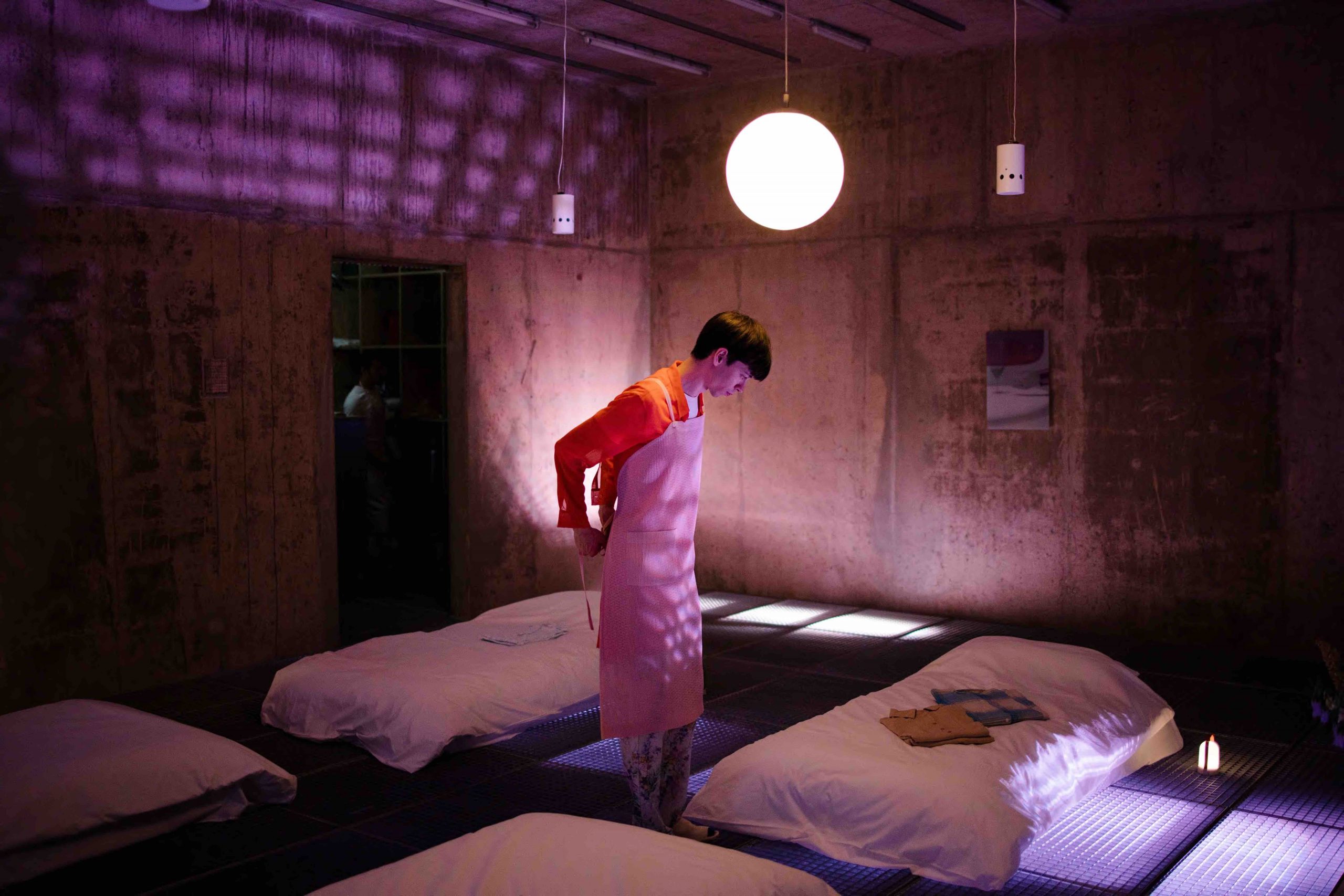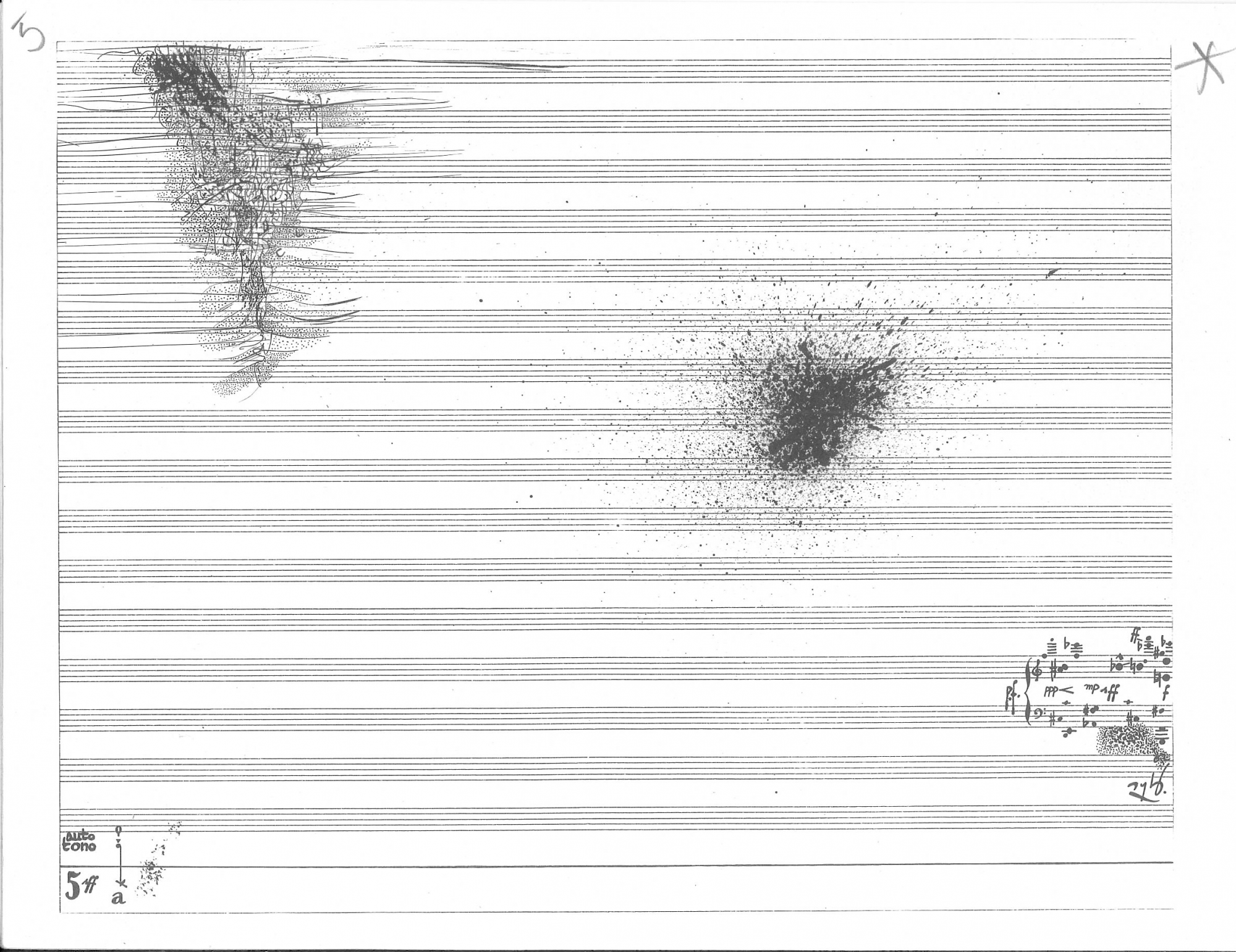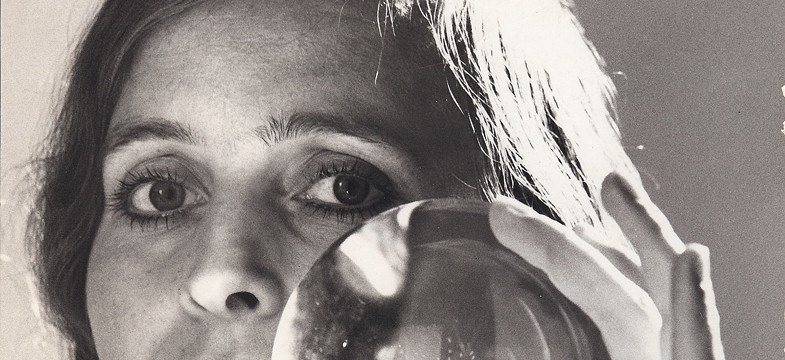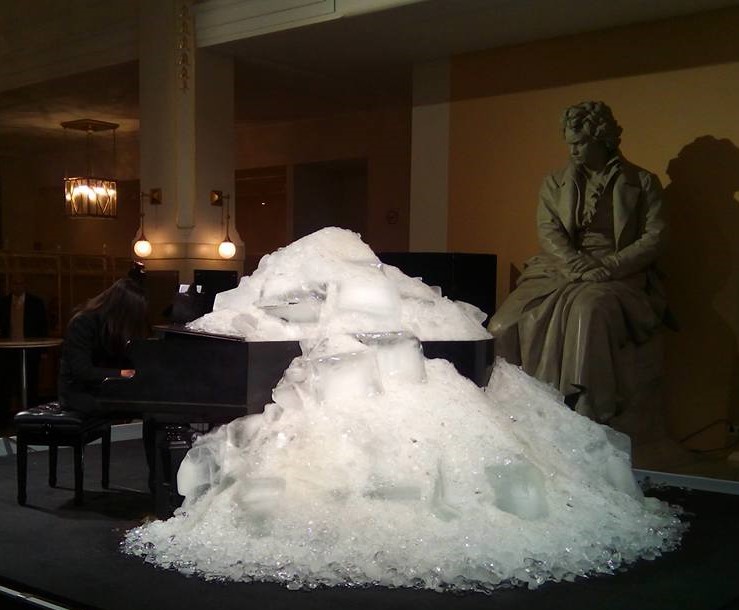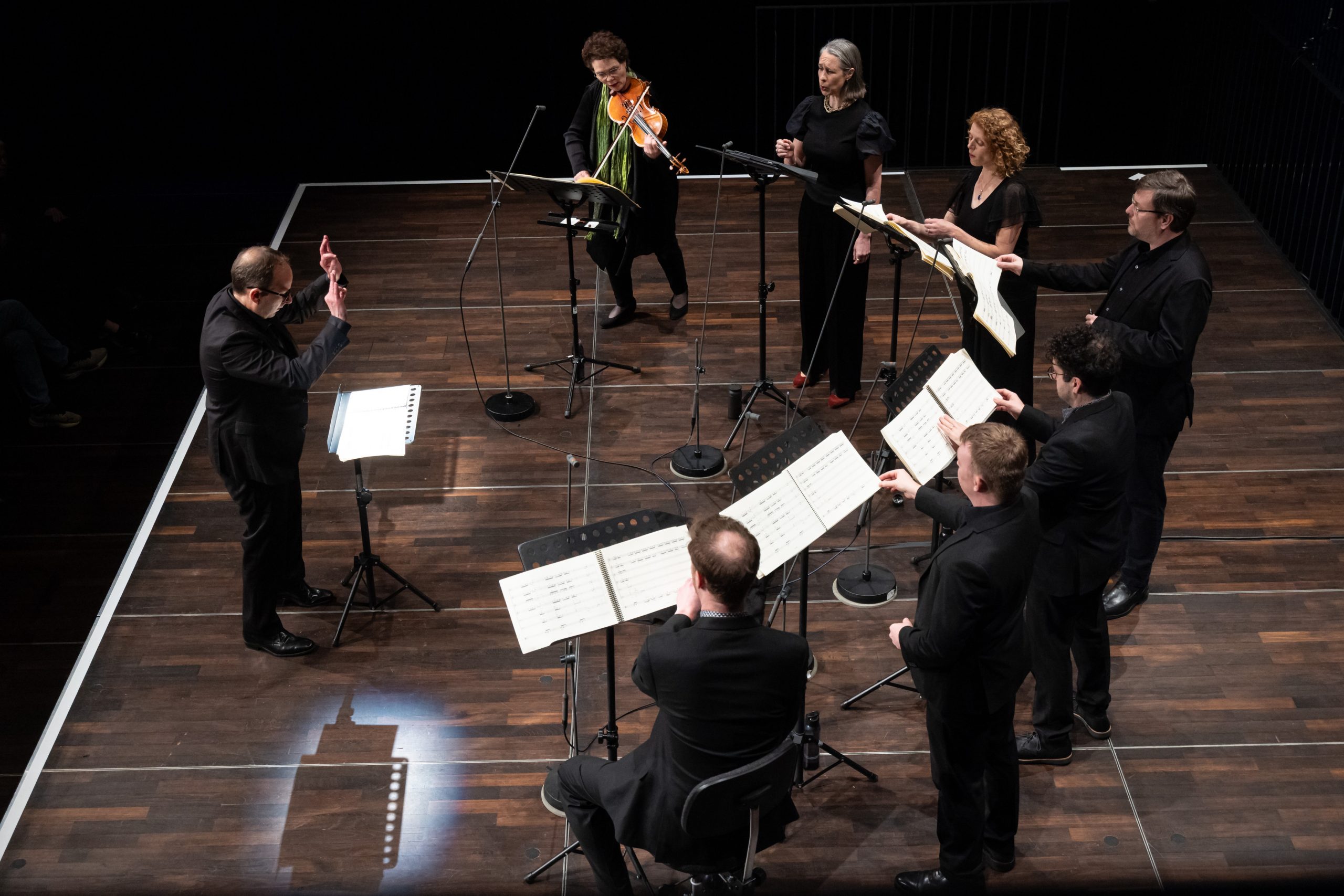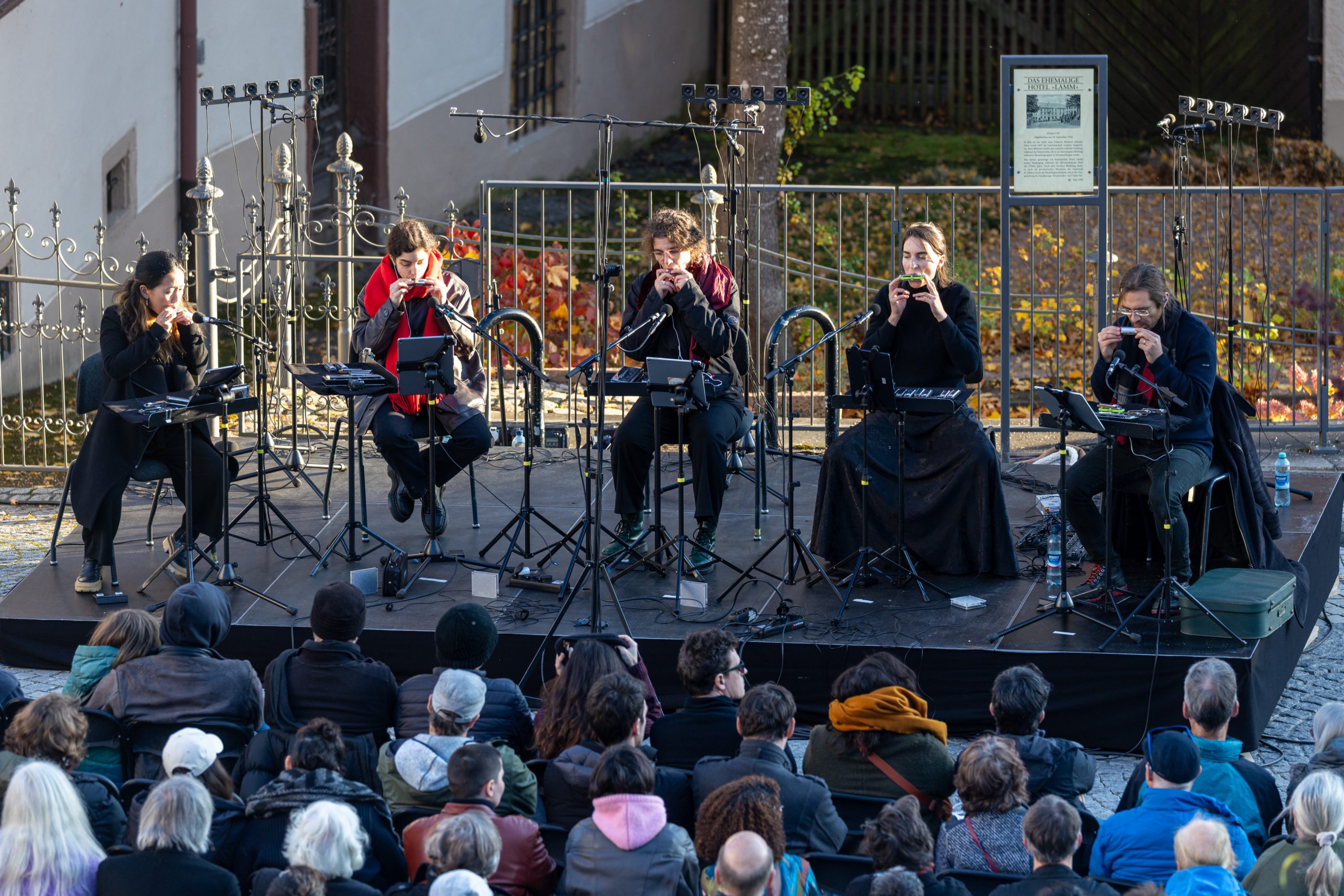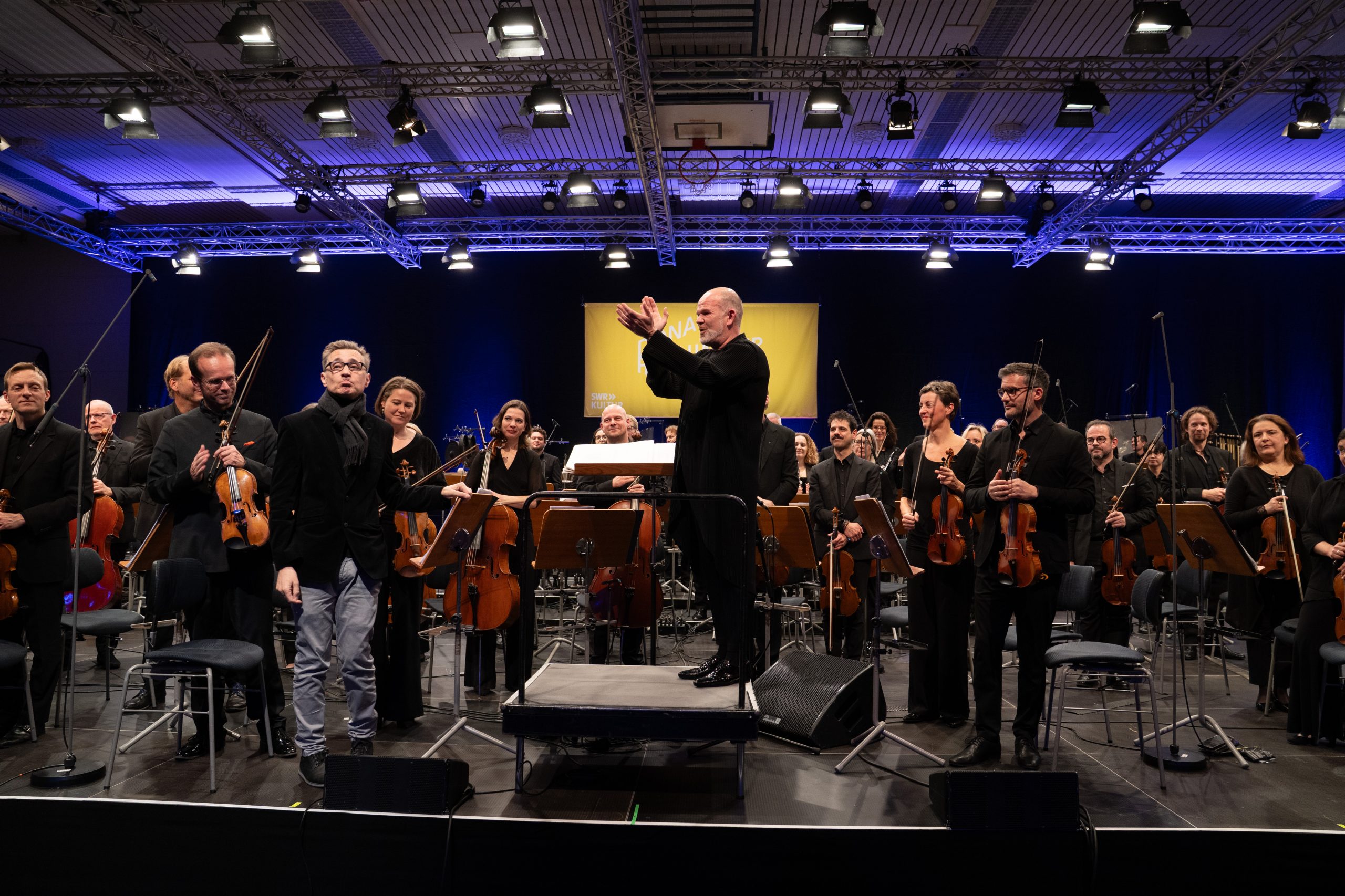Visite Critique Donaueschingen: Philippe Leroux

The following text was written in the context of the visite critique during the Next Generation workshop at the Donaueschinger Musiktage 2025.
Divertissement, intense
On Paris, banlieue (Un informe journal de mes rêveries) by Philippe Leroux
A text by Sasha Katsalap
In the programme note, Philippe Leroux says he hesitated whether the name of the piece should be Paris, Banlieue (Paris, Suburbs) or Construire, Sentir (Building, feeling). And I found it difficult to decide where I should begin my comment. These indecisions may reflect the piece’s choice of musical material, or rather its combination. Starting very actively with loud sounds from electronics immediately mimicked by percussion, winds, brass and piano – a big piece got to have a big opening –, it continues in a wide range of the genres and styles, from a horror movie soundtrack, Disneyland background music and parts sounding like an Hommage à Charles Ives or a wet dream of an electronic music pioneer.
A tiny lyrical digression: Phillippe Leroux has been called a protagonists of musique mixte. Paris, Banlieue felt rather like musique-put-in-the-blender.
The suspense of the beginning never really brought us elsewhere. Although never bored, I was never surprised neither – it was a very safe, pragmatic writing full of effects. By merely combining well-established composition methods – Open music here, Fibonacci series there, no chance to get away without harmonic spectrum analysis – it’s probably just not possible to create any groundbreaking outcome; not to mention that some recordings the composer used in the piece are partly just his old compositions (which added to the outdated character of the piece).
The music felt distant both in the electronic and also in the instrumental part. With all the masquerade aesthetics, it doesn’t immerse the listener into anything. During the whole piece, I have had a feeling of listening through a plastic wall between the audience and the orchestra. Mickey-mousing, gimmicking, effects were desensitizing and overloading the listener with an amount of sound sadly without any sense behind it.
The majority of used material never really developed, or where it has a short developement, never reached any transformative point. The five simple sound configurations rarely overlap, never confront each other. In a collage form, this can be understandable to a certain extent, but for me the recurrent appearance of the material together with its spatialisation was rather creating the feeling of a loop: we were all stuck together for 25 minutes, and this loop comes close to the horror of an endless trip in the Paris underground.
Immediacy style
My journey into this piece started by reading the program notes which aimed to feed the listener with extensive explanation and thereby narrowing the space for interpretations. However, I couldn’t help but notice the incompatibility between the text and musical content. I got the feeling that the composer tries to impress the public without questioning his approach or challenging us intellectually. The relation between suburb and big city was difficult to find. What I’ve definitely heard was the attitude of the arrogant metropole (more of an old cliche, not a contemporary one) with a lot of tourists and working migrants. In the city centre, the public is always fooled and robbed, fed with cheap tricks and flat tales, clapping, happily going from the centre back to the periphery.
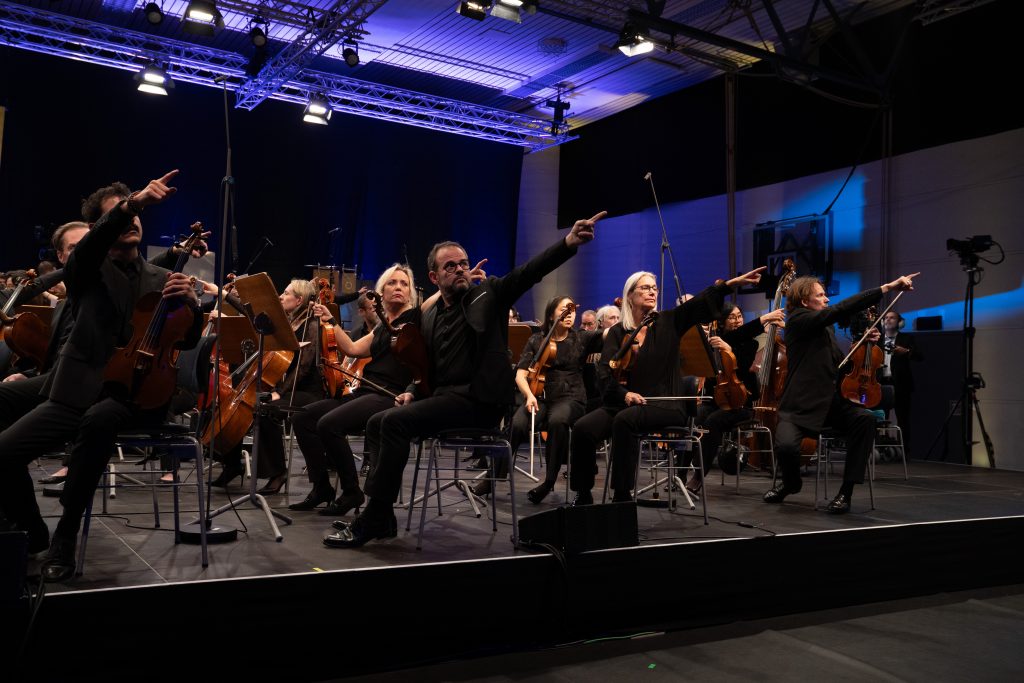
To avoid the anger of the public, you always need to feel to what extent to play a joke on them – and also to keep them amazed. So, as the most mysterious and effective tricks on the market are always kept for the ending, Leroux shows off at the very ending of the piece, with one lonely note traveling from the orchestra to the electronics seamlessly, shortly before the orchestra, for some unknown reason, starts to point with their arms to different directions (oh well, the reason is it’s a signature trick of Leroux). I had the feeling that this last display of the magic of electronics was made to remind us of the power and mystery of IRCAM technology.
Unfortunately, the magic of electronics did not work, for several reasons. The main one being an outdated approach towards them. Usage of nearly not processed saw-tones, recurrent annoying and very artificial sounds, badly balanced with an unamplified orchestra sounded like a bad joke. The same goes for the idea of creating a sound “cast” of the city, where Leroux‘ usage of technology is really coming from the past. The extensive explanation about generated melodies, a Max patch modelled after a map (which is pretty irrelevant for this software) and a sequence of morphological profiles is very much contrasting with the extremely simple sounds that are to be heard from the electronics. Even the potential to present a high-quality tale was ruined because the illusion was constantly broken by the artificiality and flatness of the electronics soundscape.
Not so funny
In the piece we could often hear laughter-like sound, sometimes in orchestral passages, sometimes coming from the speakers. I was hoping that it’s a kind of self-irony, but it was the kind of irony we get in recent superhero films where the fourth wall is broken for the producers to admit that they know how bad the movie is, and thereby protect themselves against criticism.
Moreover, I am bothered with the autofictionality of the piece. Not only using his own recordings for the tape (which is already a kind of inside joke), but presenting the piece as a diary and autobiography. Together with the sonic overload one gets from listening to Paris, Banlieue, the collage aesthetic, the micky-mousing and the flatness, this made me think about Immediacy, or The Style of Too Late Capitalism by Anna Kornbluh. She characterizes immediacy style as: ”Constant movement, beating pulse, clenching bowels, gasping breath, vibrating phone, deadline ticking all add up…” [1]. That was one of my strongest impressions from Leroux piece – a lot of elements, seemingly related to each other, not really interacting but changing fast enough to keep the audience impressed. For in immediacy style, the accessibility of artworks is important in a flattened, perverted way: “Immediacy style rapidly inputs information available on the surface as immanent unto itself, without need for slow, long reading or interpretation”. Together with the auto-fictional framing, all those characteristics make Paris, Banlieue a perfect example of immediacy style. To me, its biggest achievement is to be outdated and very contemporary at the same time.
P.S:
Since the piece got the SWR Orchestra Prize, I feel a bit of the need to reflect on the choice of the orchestra. There is quite a clear explanation, why they would vote for it. In comparison to other pieces of this year’s edition, it can be said without any doubt that the orchestra was “used” – every instrument had a decent part to perform still being not too demanding for musicians. Despite the simple formal and structural organisation of the material, there were some separately enjoyable sounds. I guess they had fun.
[1]Anna Kornbluh, Immediacy or the style of too late Capitalism, London ; New York : Verso, 2024, p. 91.







